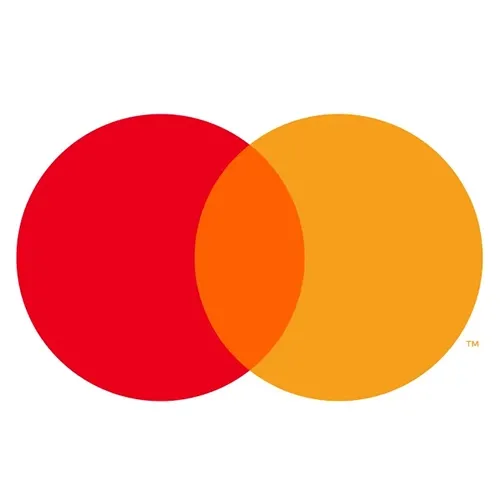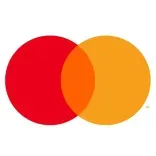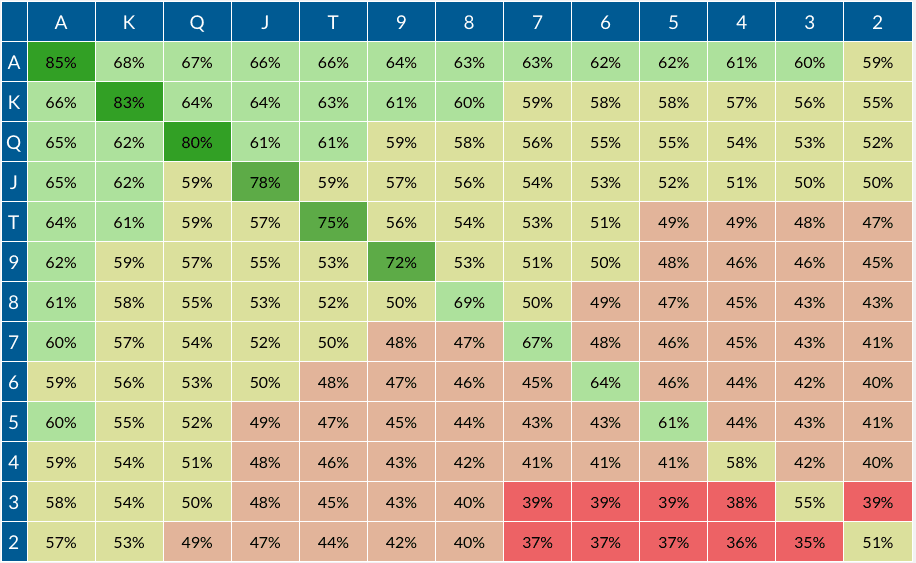Poker 101: A Refresh of the Top-20 Hole Cards
The film may be 26 years old, but Rounders was a masterpiece for a gambler curious about the world of No Limit Texas Hold'em. Mike McDermott has the best line in the movie when he says, "If you can't spot the sucker in your first half hour at the table, then you are the sucker."
🏆 Best Online Casinos To Sign Up For

- Wide Range of Casino Games
- Generous Free Spins Welcome Bonus
- No Wagering Requirements










Promo Code

- Multiple Welcome Bonuses
- Fanatics Exclusives
- Optimized Mobile Play







- Multiple No Deposit Bonuses
- Lucrative Progressive Jackpots
- Fast Payout Speeds











Promo Code

- Exceptional Rewards Program
- Several Live Casino Games
- Intuitive Casino App












Promo Code

- Generous Welcome Bonus
- Several Ongoing Promotions
- Wide Range of Table Games











- 1,500+ Casino Games
- Generous Welcome Bonus
- Exceptional Mobile Casino App











- 2,000+ Casino Games
- 100% Deposit Match Bonus
- Access to BetMGM Rewards











Promo Code

- Slots, Table Games, Live Dealer Games
- Several Video Poker Options
- Intuitive, User-Friendly App










- Slots, Table Games, Live Dealer
- Many Exclusive Games
- Welcome Bonus & Ongoing Promos












Promo Code

- Good Selection of Casino Games
- Solid Welcome Offer
- High Quality Mobile App







✅ The Top 20 Hole Card Hands In Poker
Based on my personal experiences on a riverboat in Missouri to a Genting card room in the UK, there is always a fish at the table. (See: Darren Rovell's first game at 888poker.)
A fish is a derogatory term for player who has no clue how to play the game. From bad starting hole cards to playing too many hands to unusual bet sizing, a fish can make the night for a poker professional. Fish can easily be identified by making an incorrect play with respect to the hole cards and table position.
The best way to check out of the fish zone is to know the top-20 hole cards for a No Limit Texas Hold'em game. Bet sizing and button strategy are essential to an advanced poker game, but this article will focus on the top starting hands and how to bet them.
Knowing win probabilities behind each of the card combinations will ensure a continuous edge for the player.
The video above shows four players all possessing top-20 starting hole cards.
Learning the strength of your starting cards will help distinguish if a player should be in a hand and for how much of an investment. Without knowing an opponent’s cards, here’s a quick snapshot of the percentage chance of winning based on starting cards.

There are 169 different combinations of starting hands. With reference to suit, there are as many as 1,326 different combinations of hole cards. Each of them has a probability of winning.
Here’s a look at the top-20 hole cards for No Limit Texas Hold’em:
- A♠️ A♣️
- K♥️ K♦️
- Q♦️ Q♠️
- A♥️ K♥️ (suited)
- J♠️ J♦️
- A♣️ Q♣️ (suited)
- K♠️ Q♠️ (suited)
- A♦️ J♦️ (suited)
- K♣️ J♣️ (suited)
- T♣️ T♥️
- A♦️ K♠️
- A♣️ T♣️ (suited)
- Q♣️ J♣️ (suited)
- K♣️ T♣️ (suited)
- Q♣️ T♣️ (suited)
- J♣️ T♣️ (suited)
- 9♦️ 9♠️
- A♥️ Q♦️
- A♣️ 9♣️ (suited)
- K♦️ Q♠️
There are plenty of different theories as to what a raise should be with these starting hands.
The flop, turn and river each decrease the equity of a hand, thus giving a different starting strategy in every case. A pre-flop raise should be anywhere from half to the full size of the pot when entering first for action, also known as an open-raise. Some poker professionals advocate for 2.5 times the big blind as the first action, but there are special cases to go even higher.
When sitting on a top-five hand, it’s important to eliminate as much limp action as possible. Adding 1 big blind for each limper is a rule of thumb. For example, if you held A♠️ A♣️ on the button position and seven previous players limped into the pot, it is not out of the question to fire seven to 10 times the amount of the big blind.
Protecting pocket aces while sitting in the penthouse of button position is paramount.

Position with relativity to the button can mean everything — the later you are to make a decision, the more information you will receive from other players.
While A♠️ A♣️ in the button position is the strongest combination, collecting 9♦️ 9♠️ in a blind position can be weak with a flop full of over-cards. A poker player should always know if they are in a blind, under the gun, or button position.
Read more: Most common blackjack mistakes
Read more: Overview on Video Poker
Sticking to the top-20 hole card hands can take a player from beginner to intermediate.
Here’s a look at poker odds through different scenarios, proving that playing a limited number of hands and focusing on the top 20 will progress any gambler’s game.
| Scenario | Example Hand | Opponent | Poker Odds |
|---|---|---|---|
| High and Low card v Two Middle | A♠️ 7♦️ | T♠️ 8♦️ | 55% v 45% |
| Pair v One Over Card | T♣️ T♥️ | A♣️ 8♥️ | 71% v 29% |
| Pair v Two Off-Suit Over-Cards | 9♦️ 9♠️ | Q♥️ J♠️ | 52% to 48% |
| Pair v Two Suited Over-Cards | 9♦️ 9♠️ | Q♠️ J♠️ | 49% to 51% |
| Pair v Undercards | J♠️ J♦️ | 8♦️ 7♠️ | 81% v 19% |
| Pocket Pair v Lower Pocket Pair | A♠️ A♣️ | 9♦️ 9♠️ | 80% v 20% |
| Same Card w High and Low kicker | A♦️ K♠️ | A♦️ J♣️ | 73% v 27% |
| Two higher cards v Two lower cards | A♦️ K♠️ | Q♦️ J♠️ | 63% v 37% |
